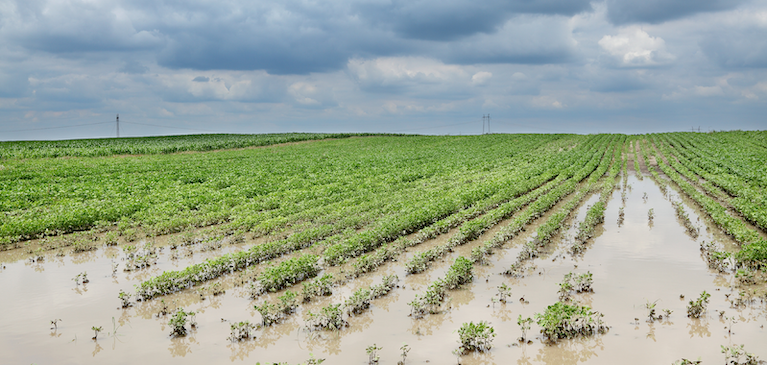
Most producers have been there before. No matter what you do during the growing season, sometimes Mother Nature just will not cooperate, and you are anticipating your yields may fall below your crop insurance guarantee. This is never the situation you hope for, but that’s why you purchased crop insurance to begin with. If you do find yourself in a claims situation, there are some important things to remember that can help the process go most smoothly. Many times, money is left on the table because these guidelines are not followed. Don’t lose out on a potential indemnity because notification was not done on a timely basis.
- Perils- The vast majority of naturally-caused perils are included under multiple-peril crop insurance (MPCI) coverage. This includes but is not limited to: adverse weather, failure of irrigation water supply, fire, insect damage or plant disease (unless you improperly or insufficiently applied pest or disease control measures) and wildlife damage. Those covered under Revenue Protection are also protected from a decline in market price.
- Timeframe- Insurance coverage generally begins at time of application or time of planting, whichever is later. The end of the insurance period is generally recognized as the earlier of: total destruction of the crop, final harvest of the crop, abandonment of the crop, or the end of the insurance period (which is December 10th for corn insured as grain and soybeans).
- Insured’s responsibilities – For planted crops, the insured must notify the insurance company within 72 hours of the initial discovery of the damage or production loss, but no later than 15 days after the end of the insurance period, even if the crop has not yet been harvested. If you have a revenue protection policy and have a claim based on strictly price, the insurance company must be notified within 45 days of the harvest price announcement for the crop.
- Appraisals- If you are going to harvest your planted crop in any non-traditional manner, a crop appraisal needs to be completed, otherwise you may lose out on a potential indemnity payment. The most common time an appraisal is needed is when you’re going to chop corn for silage that is insured as grain. If you have a corn policy, any acreage that is not harvested traditionally as dry grain should be appraised. You should contact your GreenStone crop insurance specialist at least a week in advance of when you are planning on harvesting so it can be arranged for an adjuster to perform the appraisals while the crop is still in the field. In the event you harvest before an adjuster is able to perform appraisals, representative sample strips must be left in the fields so the adjusters can use them for appraisals. The strips must be at least 10 feet wide and run the entire length of the field. If you do not agree with the appraisals you’ve gotten from the adjuster, do not sign them. Call your crop insurance specialist right away and to have another adjuster come out and perform a second appraisal.
Throughout the whole claims adjustment process, if you ever feel uneasy or that something doesn’t seem right, contact your crop insurance specialist as soon as possible. Obviously no one wants to have a claim; producing a bumper crop is much more enjoyable than receiving a large claims check. Remembering these key points will help make the process go that much better.
To view the article in the online 2022 Summer Partners Magazine, click here.


